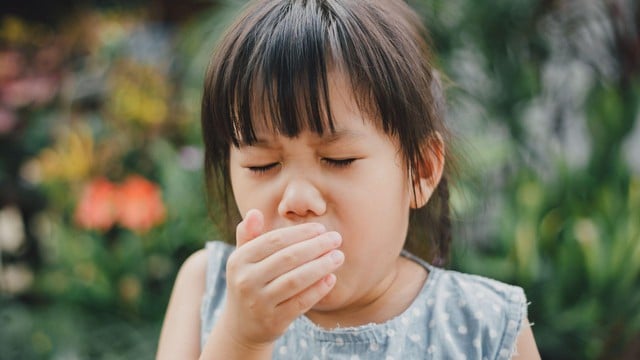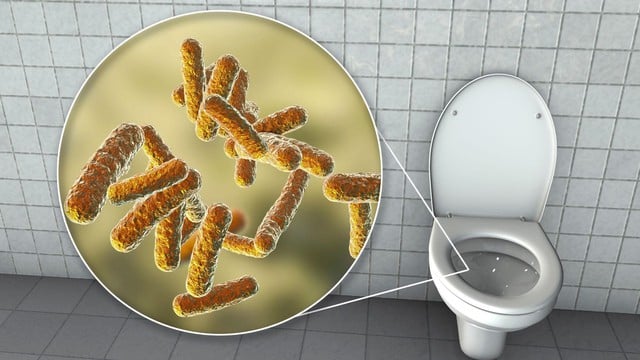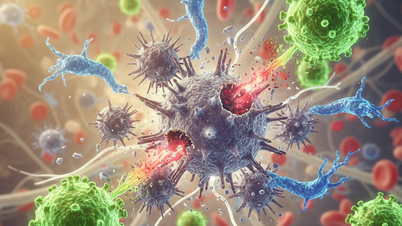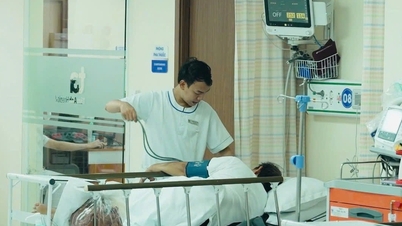During the changing seasons, changes in temperature, humidity and air pressure create conditions for viruses and bacteria to grow, thrive and easily attack everyone, especially the elderly, children and people with weak immune systems. In addition to keeping warm and supplementing nutrition to increase resistance and prevent disease, many people often forget that the problem also lies in the living environment - where pathogens hide every day.
According to Associate Professor, Dr. Nguyen Tien Dung - former Head of Pediatrics Department, Bach Mai Hospital , children are susceptible to diseases, especially respiratory diseases during the changing seasons due to their lower resistance and ability to adapt to temperature changes compared to adults. According to statistics in Vietnam, the rate of respiratory diseases in children often increases in March-April and September-October. In addition, people with underlying diseases (asthma, bronchitis, chronic obstructive pulmonary disease, diabetes, cancer...) are also at risk of acute respiratory diseases during this period.

Children are susceptible to respiratory diseases during the changing seasons.
In addition to changes in weather and temperature, Professor Nguyen Tien Dung also pointed out a cause worth paying attention to: " As society develops more and more, the environment is increasingly destroyed, especially the air environment. Air pollution is one of the causes of respiratory diseases. Pollution can occur in each person's own home, from the bedroom, kitchen to the bathroom ."
In the toilet environment, bacteria from waste and scum can contain ammonia and hydrogen sulfide, which can cause coughing, sneezing and difficulty breathing, especially in people with chronic respiratory diseases such as asthma. Some bacteria such as Pseudomonas aeruginosa can also cause pneumonia and sinusitis.
Bacteria can accumulate and spread on people's bodies and clothes through flushing the toilet, from droplets or indirectly transmitted after bacteria settle on surfaces in the bathroom such as toilets, faucets, door handles, etc.
Infections can spread beyond the bathroom environment if effective interventions are not taken. Bacteria and viruses can spread from bathroom surfaces to items in the living room, bedroom and kitchen.
When suffering from bacterial diseases, patients need to be treated with antibiotics combined with regular care. However, the use of antibiotics must be prescribed by a doctor, absolutely avoid arbitrary use and abuse of antibiotics for children, avoid antibiotic resistance causing serious health consequences.
Emphasizing the growth and development of bacteria, Professor Nguyen Tien Dung said that currently, in some localities, the lack of facilities and unsafe water sources in toilets cause the density of bacteria in the air and on surfaces to grow strongly, thereby leading to an increase in the rate of respiratory diseases.
Many families only focus on keeping their children warm, forgetting that cleaning the living environment is extremely important. Bacteria are invisible to the naked eye, but they stick everywhere from door handles, towels to bathroom floors... Therefore, keeping a clean living environment and eliminating bacteria is extremely important to prevent diseases for children.

The living environment in the home, especially the bathroom, can potentially harbor many disease-causing bacteria.
To prevent respiratory diseases in children during the changing seasons, Professor Nguyen Tien Dung recommends important measures.
- Pay attention to the issue of hygiene in the living environment: Each family needs to completely eliminate cigarette smoke from entering the living space; Limit the use of wood stoves, incense, votive paper...; Open the doors in the house for ventilation; Eliminate mold, bacteria, insects... in the house, especially in the bathroom and toilet.
- Build a diverse and nutritious diet for children to help increase resistance.
- Vaccinate children fully and on schedule.
- Let children exercise outdoors so they can connect and integrate with fresh nature.
Maintain the habit of cleaning the bathroom every day, especially with products that can kill bacteria deeply, deodorize, and remove mold.
With just 3 simple steps with VIM, you can keep your space clean and safe:
• Pour VIM directly into the toilet and dirty areas, leave for a few minutes for the active ingredient to take effect.
• Scrub and rinse to remove dirt and bacteria.
• Wipe the surfaces around the sink, walls, bathroom floor, etc. with diluted VIM solution to completely disinfect.
Health care and disease prevention start from your daily living space!
Viet Hong
Source: https://suckhoedoisong.vn/chuyen-gia-canh-bao-moi-nguy-hai-tu-vi-khuna-thoi-diem-giao-mua-169251109065545716.htm



































































































![Dong Nai OCOP transition: [Article 3] Linking tourism with OCOP product consumption](https://vphoto.vietnam.vn/thumb/402x226/vietnam/resource/IMAGE/2025/11/10/1762739199309_1324-2740-7_n-162543_981.jpeg)













Comment (0)